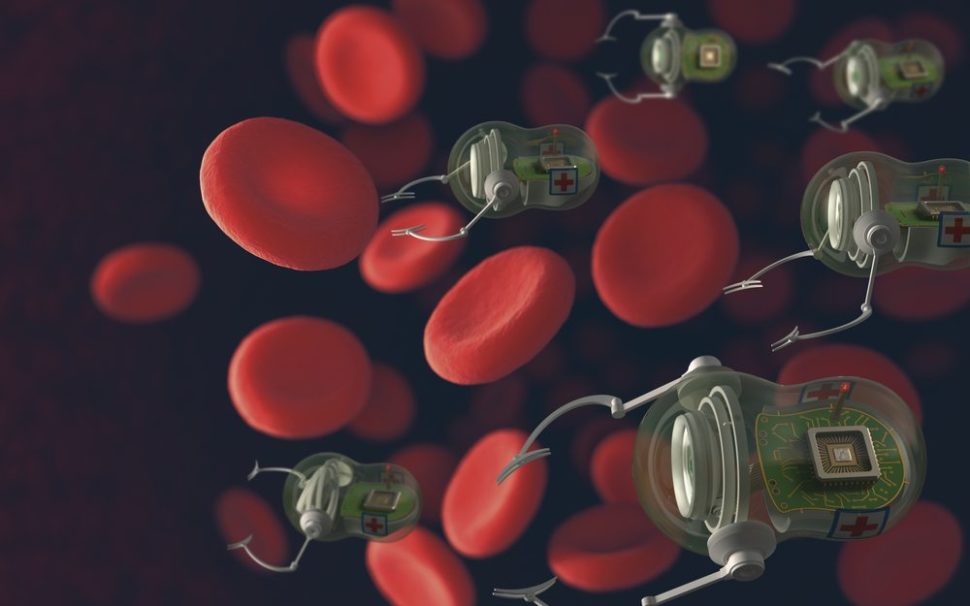Nanoengineers have created tiny bots that can float through the body to deliver drugs. These nanomachines have cured bacterial stomach infections in living organisms for the first time.
Sending nanobots into the bloodstream to diffuse medical treatment is materializing little by little. This is one of the biggest potential and seemingly inevitable challenges for nanotechnology.
For the first time, nanobots cure stomach bacterial infection in mice.Click To TweetThe medicine of tomorrow could rely on these microscopic allies to deliver medical treatments in a very targeted way and thus avoid having to resort to surgery and other large-scale invasive procedures.
Nano-Swimmers, Future Defenders of the Body
Since the early 2000s, the dream that tiny robots could clean cholesterol from arteries has grown.
Ingested or injected, nanoscale robots could effortlessly make their way through the body to accomplish various missions, such as delivering drugs to cells in need, targeting cancerous cells, unclogging arteries, destroying enemy invaders like viruses and bacteria, and etc.
With extreme miniaturization, which is no longer a technical obstacle, a challenging problem arises: navigation.
Once injected into an organism, nanobots must be guided to spread medical treatment precisely where it is needed, which means wading through the entire circulatory system.
One of the most promising paths is to use an external magnetic field to steer drug-delivering nanobots while they swim inside circulatory pathways.
Yes, there are swimming nanobots that have rotating arms and can front crawl. At 10 micrometers per second, they’re surely not as fast as Michael Phelps, but swift enough for their size.
A fact to consider, unlike Olympic swimmers, nanobots have to crawl inside blood and other viscous fluids, which are way more dense than water.
Hydrogen-Propelled Micromotors Treat Mice From Stomach Ulcer
As reported by the New Scientist, a team from the University of California-San Diego have developed micromotors, a kind of robotic drug delivery system.
Measuring half the width of a human hair, these micromotors have managed to treat mice infected with ulcers for 5 days.
These nano vehicles consist of a magnesium core which serves as a means of propulsion by a chemical reaction that produces hydrogen bubbles all around the device.
Once the treatment was complete, it was shown that this approach was actually much more effective than oral intake of drugs.
Nanobots can administer a regular dose of antibiotics for several days. What’s more, they can get the closest possible to the infection. Sheer proximity can increase the effectiveness of the treatment.
As a bonus, in addition to administering the drug, the chemical reaction between the magnesium and the acid reduces the gastric acidity and therefore again increases the effectiveness of the antibiotic, while reducing its impact on the body.
Made of bio-degradable materials, these micromotors are completely dissolved by the gastric acid once the pH level gets back to normal after 24 hours, without any noticeably harmful residue.
UCSD’s nanoengineers will be conducting further animal tests, using other drugs and targeting other parts of the gastrointestinal tract.



















Comments (0)
Most Recent